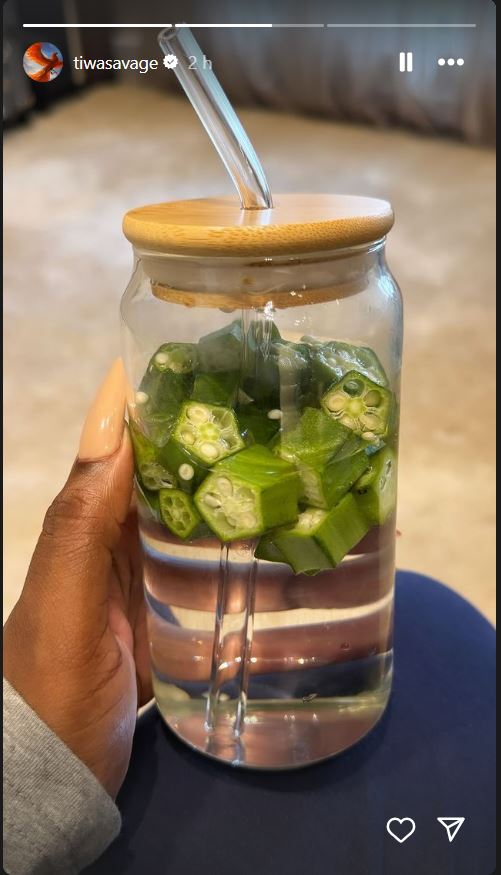Health
What to know about tinea versicolor — the fungal skin infection

One hot afternoon, a friend and I were making our way from the University of Lagos using the means of transport common to all semi-broke ‘freshers’ – the campus shuttle. The sun shone like its purpose was to punish rather than illuminate, and the air stood excruciatingly still.
It was on this day and on that bus that I felt a timid tap on my shoulder. An even more timid whisper followed the tap, “Sorry dear, please help me tell your sister that she has ringworm on her back.” Suddenly, the heat I felt was not from the sun, but from blood rising to my cheeks on her behalf.
When we got home, we promptly investigated the claim. There was no red skin, no prominent ring-shaped rash. All we saw was a small patch of skin about two shades lighter than her skin tone.
She didn’t have ringworm or eczema. She had tinea versicolor.
WHAT IS TINEA VERSICOLOR?
Tinea versicolor or pityriasis versicolor is a common fungal infection that affects over 100,000 people in Nigeria each year.
It is caused by the fungus Malassezia which is found on the surface of our skin. This normally helpful symbiote can sometimes spiral out of control like a houseguest that not only overstays his welcome but invites his family to take over your home.
When this happens, you develop patches of skin that may be lighter or darker than the surrounding skin.
Tinea versicolor is not contagious, and you can not contract it by sharing towels or clothes.
WHAT CAUSES TINEA VERSICOLOR?
Several factors that can trigger the fungal hostile takeover include:
- sun exposure
- hot weather
- excessive sweating
- oily skin
- hormonal changes
WHAT ARE THE SYMPTOMS OF TINEA VERSICOLOR
As stated at the outset, tinea versicolor is often misdiagnosed (mostly by people who are neither trained nor qualified to diagnose anything) and mistaken for other skin conditions such as eczema, ringworm, and vitiligo.
The most visible sign of tinea versicolor is discolored patches of skin, which commonly appear on the arms, chest, neck, or back. These patches could be:
- darker (hyperpigmentation) or lighter (hypopigmentation) than the surrounding skin
- a shade of pink, red, tan, or brown
- scaly, dry, and itching
In cooler, less humid temperatures, they are more likely to vanish.
HOW IS TINEA VERSICOLOR TREATED?
Tinea versicolor is a fungal infection. Therefore, wolfing down antibiotics and using antibacterial creams to treat it will only destroy your gut flora and damage your skin barrier.
Basically, you will continue to have itchy patches of skin but in addition to that, you won’t be able to pass out faeces because you’d have destroyed the bacteria in your digestive tract.
Antifungal creams or shampoos purchased over-the-counter (OTC) may be beneficial to treat the infection.
They include:
- clotrimazole
- miconazole
- selenium sulfide
- terbinafine
If you seek medical help for tinea versicolor, your doctor may prescribe topical creams that you can apply directly to your skin.
Examples are:
- ketoconazole
- ciclopirox
Your doctor may also prescribe the following oral medications:
- fluconazole
- itraconazole
- ketoconazole
Sadly, even after you treat the infection, your skin may stay discolored for several weeks or months. When the weather gets warmer and more humid, your infection may recur.
If your condition returns, your doctor may prescribe medication once or twice per month to prevent symptoms.
THE DIFFERENCE BETWEEN TINEA VERSICOLOR, ECZEMA, AND RINGWORM
It is important to know the difference between these infections, as they each require different courses of treatment.
ECZEMA

Eczema is the name erroneously given to practically any rash that occurs in our environment. One of the common eczemas is nummular eczema or discoid eczema. It is a skin disorder in which people gain coin-shaped or oval red or brown patches on their skin.
Other symptoms of nummular eczema may include:
- dry skin
- burning and itching of the skin, which is usually worse at night
- open spots that may crust over
If the spots become open, they are vulnerable to bacterial infection. Infected nummular eczema can cause:
- redness
- swelling
- foul-smelling discharge
- fever
Doctors do not know exactly what causes nummular eczema, and it has no remedy at the moment. The goal of treatment for this ailment is to cure the afflicted skin and prevent symptom flare-ups.
Doctors will recommend a treatment plan based on the patient’s age, symptoms, and current health status.
Eczema can fade away over time for some people. Others have it for the rest of their lives.
RINGWORM

Tinea corporis, also known as ringworm, is a skin ailment that resembles nummular eczema. Despite the name, fungus, rather than a worm, causes this infection.
It creates ring-shaped patches of skin on the arms and legs, but it can appear anywhere on the body, including:
- the soles of the feet (tinea pedis or athlete’s foot)
- the scalp (tinea capitis)
- the groin area (jock itch)
Symptoms include:
- round, flat patches of red, pink, brown, or gray skin that may be lighter or clear in the middle, giving them the appearance of ring-shaped patches that grow slowly and may spread to other parts of the body
- Itching
Antifungal creams, ointments, pills, and shampoos can treat ringworm. Many of these drugs are available without a prescription (OTC).
Before the fungus will go away, you will need to apply these treatments to your skin for 2 to 4 weeks. If the ringworm rash does not clear up within this time, consult a doctor. A doctor or dermatologist might prescribe stronger antifungal drugs to treat the problem.
It can be fascinating (or disgusting) to know that our skin plays host to millions of microorganisms, including fungi. But as long as you set the proper hygiene limits, you and your microscopic inhabitants will be just fine.
Health
Five benefits of drinking Okra water

Of recent, the trend of drinking okra water has gained traction backed with compelling evidence of its numerous health benefits.
In this article, we dive into the world of okra water and uncover five amazing key benefits of incorporating okra water into your daily diet, thereby unlocking the nutritional power hidden within:
Improved digestive health
Okra water is rich in soluble fiber, which aids digestion by promoting regular bowel movement and preventing constipation. It contains a gel like substance called mucilage that soothes and coats the digestive tract, reducing inflammation and easing symptoms of gastrointestinal discomfort. regular consumption of okra water can contribute to a healthier digestive system .
Weight Loss Management
Okra is low in calories and contains high fiber content, which can help make one fuller for longer . The soluble fiber in okra water helps increase feelings of fullness reducing appetite as well as unnecessary cravings. By including okra water into a balanced diet, individuals can support their weight loss goal in a sustainable manner.
Blood Sugar regulation
If you are watching your blood sugar levels or have a loved one doing so, this benefit of okra water would be really helpful as it tends to have potential benefits for blood sugar regulation. Okra contains soluble fiber, which can slow down the absorption of sugar in the digestive system, helping to stabilize blood sugar levels . By incorporating okra water into your diet, you may experience more consistent blood sugar levels and reduce the risk of complications associated with diabetes.
Heart Health Promotion
Okra is rich in nutrients like fiber, antioxidants and vitamins that contribute to a healthy heart. The fiber content in okra can help lower cholesterol levels, while the antioxidants can help reduce inflammation and protect against heart disease. However, it’s important to remember that okra water alone is not a magic solution. A balanced diet, regular exercise, and overall healthy lifestyle are key for promoting heart health.
Skin and Hair Benefits
Okra water contains vitamins and minerals, including vitamin C and biotin, which can indeed benefit both skin and hair health. Vitamin C acts as an antioxidant, helping to protect the skin from oxidative damage caused by free radicals, thereby promoting healthier skin. Biotin, also known as vitamin B7, supports the health of hair by promoting stronger, thicker strands. Incorporating okra water into your diet or using it in beauty treatments may provide a natural way to enhance the health and appearance of your skin and hair.
With this benefits of okra water stated, if you happen to be a naysayer to okra water, you should definitely think about its benefits.
Health
Symptoms, risk factors, treatment — what to know about throat cancer

On Thursday, Ogbonnaya Onu, a former minister of science and technology in the Muhammadu Buhari administration, died aged 72.
Reports suggest that Onu, who was the first civilian governor of Abia state, grappled with throat cancer before his demise.
If you came across the news, you may have wondered for a quick minute about throat cancer and maybe imagined how the symptoms would physically manifest. Perhaps you imagined a lesion or even a swollen neck.
What is throat cancer?
It refers to a type of cancer that develops in the throat, also known as the pharynx.
The human throat is a muscular tube that begins behind the nose and ends in the neck. The voice box sits below the throat and contains the vocal cords.
The two types of throat cancer are pharyngeal and laryngeal cancers, also known as cancer of the pharynx and the larynx.
What are the symptoms of throat cancer?
Symptoms of throat cancer include persistent cough, sore throat, a lump in the throat that does not heal, changes in voice, such as hoarseness or not speaking clearly, difficulty swallowing, ear pain, and sudden weight loss.
What causes throat cancer?
Throat cancer occurs when cells in the throat develop genetic mutations that cause them to grow uncontrollably. The continuous growth kills the normal cells. Then, the accumulating cells can form a tumour in the throat.
It is not clear what causes the mutation that leads to throat cancer. There are, however, factors that can increase the risk of throat cancer.
These risk factors include a family history of cancer, smoking and chewing tobacco, excessive alcohol intake, viral infections including human papillomavirus (HPV) and Epstein-Barr virus, and a diet lacking in fruits and vegetables.
How can one reduce the risk of having throat cancer?
While there are no scientifically proven ways to prevent throat cancer, there are ways to reduce its risk such as eating a diet rich in fruits and vegetables, drinking alcohol in moderation, avoiding smoking, and protecting oneself from HPV.
How is throat cancer diagnosed?
Throat cancer diagnosis involves a few steps. A physical examination will be performed in which a doctor will examine the mouth and throat.
The examination also involves a series of blood tests, while an endoscopy will be carried out.
An endoscopy is when a thin tube with a light on its end is inserted through the nose to look for abnormalities in the throat.
A chest x-ray and computerised tomography (CT) scan may also be carried out.
How is throat cancer treated?
Treatment of throat cancer will depend on the size of the tumour, whether it has spread all over the place, and the overall health of the patient.
The doctor will first need to find out what stage of cancer the individual has, that is, how far it has spread. This helps to determine the best treatment options.
Surgery may be recommended depending on the tumour size and chemotherapy may also be required.
Health
10 safety tips for boat rides

Water transportation, although a vital means of commuting, comes with its risks.
The recent unfortunate incident involving the Nollywood actor, Pope Odonwodo, known as Junior Pope, is a reminder of the importance of boat safety.
Pope, along with three others, lost their lives in a boat incident.
In a video posted by the late actor on his Instagram page on Wednesday, Pope, who was on a boat without a life jacket, told his followers to see how actors risk their lives to entertain them while pleading with the captain to go slowly as he shouted, “I have three children to raise.”
In the caption, he wrote, “See me lamenting… The risk we take to entertain you; crossing river 9ja yesterday with no life jacket… Na wahoooooo… Who does that ??”
The actor was reported to be travelling by boat away from a film set during the shooting of a movie titled, ‘The other side of Life,’ directed by Adamma Luke.
However, in response to the tragic accident, the Actors Guild of Nigeria, led by its President, Ejezie Rollas, suspended film productions involving riverine areas and boat rides.
Additionally, actors have been advised against participating in any project associated with Luke until further notice.
This incident highlights the need for stringent safety measures when traveling by water.
In this piece, we highlights 10 crucial safety tips for boat riders to ensure a safer experience:
- Wear life jackets: Always wear a properly fitting life jacket when onboard a boat. Ensure that there are enough life jackets for all passengers.
- Check weather conditions: Before setting off, check weather forecasts to avoid sailing in rough or dangerous conditions that could jeopardise safety.
- Follow safety instructions: Listen attentively to the boat operator or captain’s safety instructions and adhere to them diligently. Familiarise yourself with emergency procedures and the location of safety equipment onboard.
- Avoid overloading: Do not exceed the boat’s weight capacity or passenger limit. Overloading can lead to instability and increase the risk of accidents.
- Ensure proper boat maintenance: Regularly maintain the boat, including checking navigation lights, signaling devices, and emergency equipment like fire extinguishers and flares.
- Inform others: Let someone know your boating plans, including your route and estimated return time. This information can be crucial in case of an emergency.
- Be mindful of water conditions: Stay aware of water currents, tides, and potential hazards such as rocks or shallow areas. Navigate at safe speeds and exercise caution near shorelines.
- Monitor fuel levels: Always carry sufficient fuel for your trip and monitor fuel levels regularly. Running out of fuel in open water can be hazardous.
- Ensure children’s safety: Ensure that children wear life jackets and are supervised by adults at all times while onboard. Also, educate them about basic boating safety rules.
- Avoid alcohol and intoxicants: It’s crucial to refrain from consuming alcohol or other intoxicants before or during boat rides. Being sober enables you to make sound decisions and stay alert to potential dangers.
-

 Entertainment7 days ago
Entertainment7 days agoJUST IN: Cubana Chief Priest pleads not guilty to naira abuse charge
-

 Business1 week ago
Business1 week agoX will start charging new users to post, says Elon Musk
-

 Entertainment7 days ago
Entertainment7 days agoCubana Chief Priest arrives court for naira abuse trial
-

 Health1 week ago
Health1 week agoFive benefits of drinking Okra water
-

 Celebrities7 days ago
Celebrities7 days ago‘Not see you for 6 months, impossible’ — Davido reacts to Cubana Chief Priest’s bail
-

 Business5 days ago
Business5 days agoElon Musk threatens to suspend X accounts doing engagement farming
-

 Celebrities1 week ago
Celebrities1 week agoKai Cenat threatens to sue OnlyFans model, Layla Red who leaked their chats
-

 World7 days ago
World7 days agoDubai international airport cancels flights as flood ravages runway, UAE


















